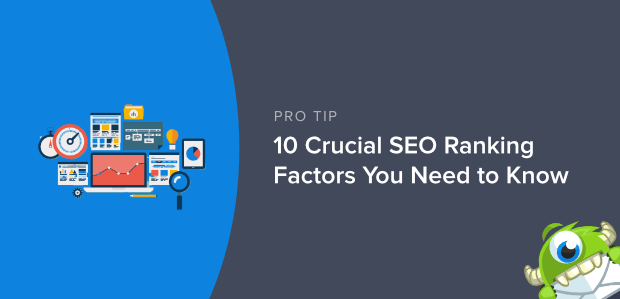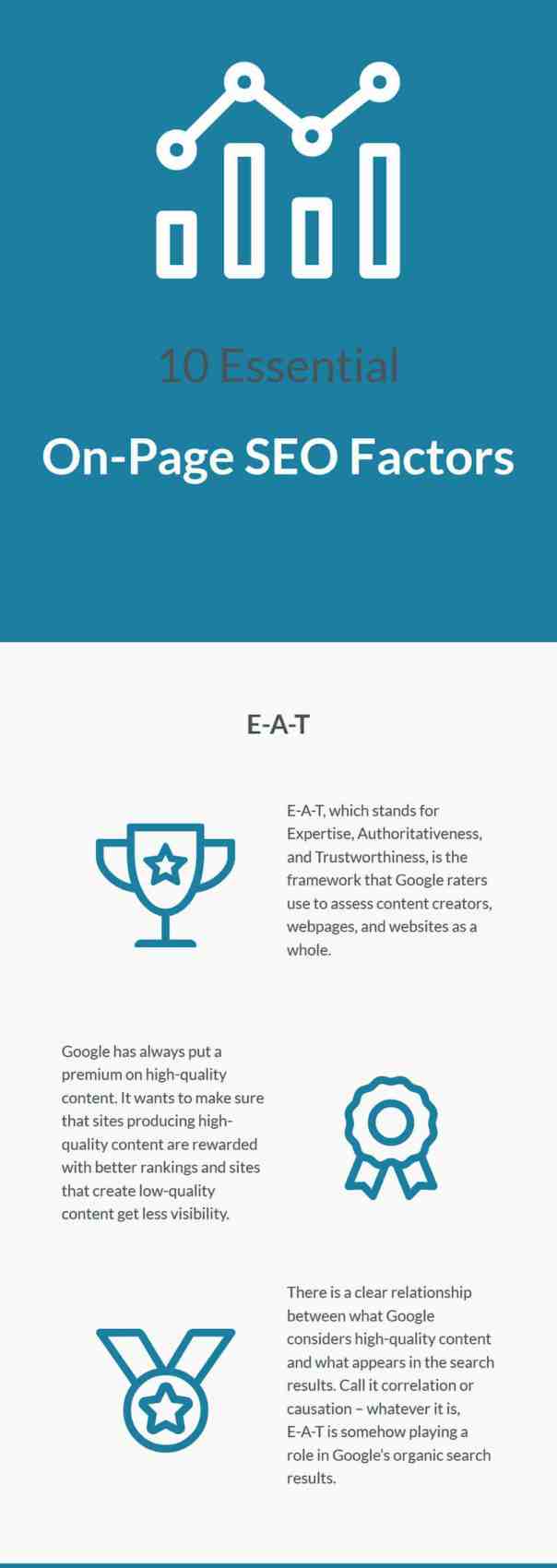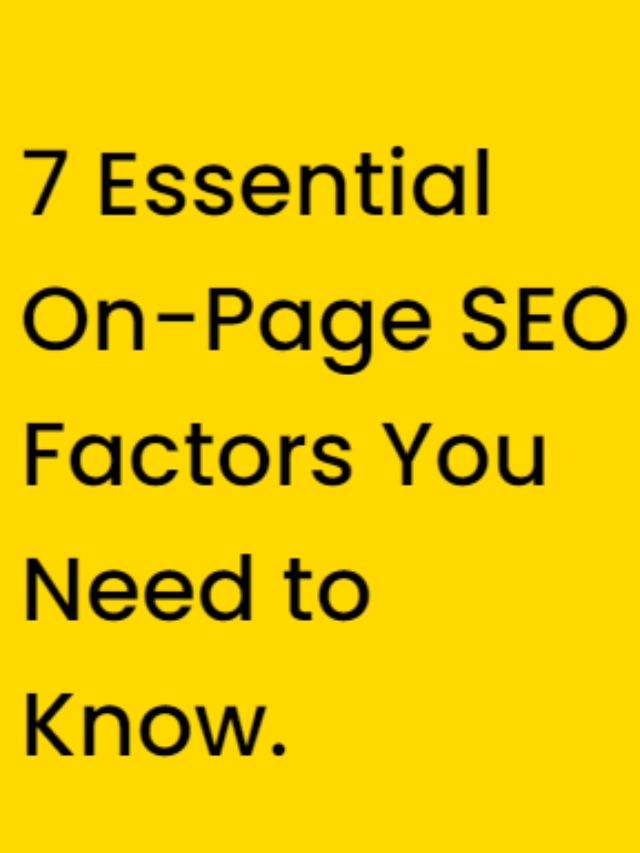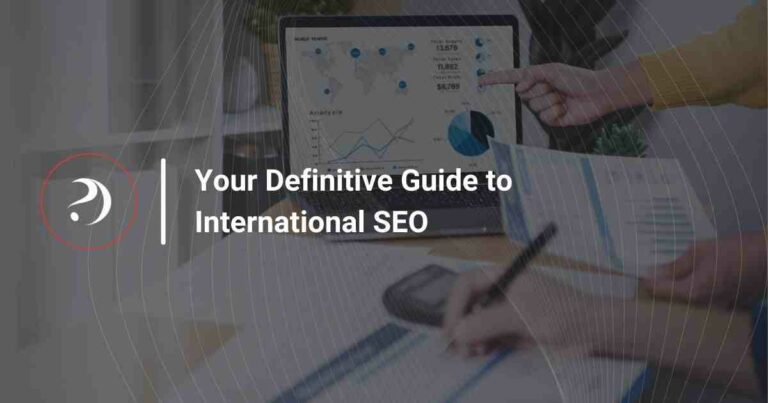12 Essential On-Page SEO Factors You Need to Know
Have you ever played Tetris? If so, you probably remember how there was no right way to “beat” the game. It basically just got faster and faster with each level.
In some ways, search engine optimization (SEO) is the same.
Not that it has a flashy 8-bit soundtrack or that it rewrites your dreams, but in that it never comes to an end.
There is no point where you can sit back and relax, content that puts your site at the top of the search engine results pages (SERPs) once and for all.
Sure, you may have reached the climax today, but the work of an SEO Pro is never done.
Any change to the Google algorithm or competitor content could knock you out of this top spot, which means you have to keep up with changes.
And that means your on-page SEO needs to be on point. But before we dive into that, it’s important to have a good overview of how Google and other search engines work.
Search Engine Basics

Search engines send crawlers, or spiders, to explore the Internet. They track links from one site to another, build a map of content called a search index.
In the process of site discovery, these crawlers also evaluate their content, determining what kind of information it contains.
This data is then used by the search engine algorithm to determine how well the content of that specific site responds to users’ queries.
The better it responds to the query, the higher it is ranked on the SERP.
In Google’s endless search for better results for users, its algorithm is frequently updated. This inevitably leads to changes in the ranking, which then requires someone to optimize the website to improve or guarantee the ranking.
What Is On-Page SEO & Why Is It Important?

On-page SEO, sometimes called on-site SEO, is the process of customizing the content of a page, tags and internal links to improve search visibility and increase traffic.
In other words, it is a means of optimizing your website to help search engines better understand your website.
And this, of course, comes with a whole host of benefits.
The first is in the amount of traffic.
The first five organic results on a search page get 67.60% of all clicks. The next five account for only 3.73%. And it falls from there. So, if you want to get traffic, you need to be on top.
Second, high-ranking sites have much better click-through rates (CTR). The first Google Mobile search result had an average organic CTR of 26.9%.
Consider now that 92.4% of the internet users who search for something nearby on their mobile phones visit the store the same day and you can begin to see the impact that organic SEO can have on your bottom line. And on-page optimization is an important factor in your organic ranking.
Hopefully, by this point, you have understood the importance of SEO on the page. Now it’s time to start. Let us know right away …
12 Essential On-Page SEO Factors

On-page SEO can be broadly divided into three categories: content, HTML, and website architecture. We look at each one.
Content
You’ve heard it before: Content is King.
SEO without it is like a nice new sports car without engine – it might look good, but it’s going nowhere. However, not all content is created equal.
Here are the content factors you need to consider to maximize your on-site SEO:
One way Google weights your site is based on E-A-T, or expertise, authority, and trustworthiness.
175 pages of Google search quality guidelines are mentioned 135 times, which should be an indication of the role they play in search engine algorithms.
While Google has only confirmed a few elements of E-A-T (PageRank and Links), it is generally accepted in the SEO field that on-page signals play a large part in their evaluations.
For a deeper dive into E-A-T, read this piece.
The most basic way to tell them the content of your website answers a user’s question is in the language you use.
Pages that show the keywords used in a query, whether in the body, sections or both, are more likely to be relevant to the search.
Sometimes this is easy to determine. If you are optimizing the website of a furniture store, you will probably include keywords like [sofa], [dining room set] and [end table].
If it’s a specialized furniture store, you want to make sure you include long tail keywords like [Contemporary Art-Deco Sideboards].
In short, you need to know what your target customers are looking for and create content that includes these terms. It is always a good idea to do research so that you do not miss any opportunities.
Start by downloading our ebook on keyword research.
Creating the kind of content that gets both search engine priority and human visitors to your site is something of an art.
Unless you’ve done this before, it can be quite challenging to write a copy that reads well and still maintains SEO best practices.
We’ve dedicated a whole piece to help you master the art, but some of the key takeaways include:
The use of images, videos and infographics makes more than your site visually interesting to visitors. It also gives you opportunities to strengthen your SEO.
More than 36% of consumers use visual search when shopping online, which means if you do not use images, you will miss the traffic.
Make sure you optimize your accompanying text whenever possible.
Be aware of your image file sizes to avoid slow loading. Make your images shareable to identify backlinking opportunities that can help boost your EA-T.
HTML
HyperText Markup Language or HTML is the code used to structure your web pages and their content.
They tell the user’s browser what to display and where to display it. And it tells search engines what your page is all about and where they should rank you.
Here are the on-page SEO HTML factors you need to consider:
This is one of the areas where it is important to focus on the details.
Alone, this snippet of code that allows you to give a website a title is not likely to increase your SERP ranking.
But in context with other elements on the page (like the ones discussed here), it can help you build context and demonstrate the relevance of your site.
For a more in-depth look at how to optimize your title tags, read this.
The moment a veteran SEO professional raises his hands on screen. “Oh, come on,” she says, “everyone knows that meta descriptions are not an SEO ranking factor.”
She is only partially right. While that’s true, there’s a lot of evidence against meta descriptions as a ranking factor, it’s wrong for anyone to know that.
And do not let negative Nancy stop you from adding them to your site.
Despite their relative lack of use in SEO, they offer two key benefits: They can help Google understand what your website is all about, and more importantly, they have an exaggerated impact on your CTRs.
Better meta descriptions give searchers a better understanding of what your page is all about, which in turn leads to more clickthroughs. So, do not neglect them.
We’ve already touched on the importance of visual assets on your site, but now it’s time to take a closer look at their technical aspects.
Here are some tips to help you optimize:
Once again, we have an excellent resource for more detailed information on HTML image optimization. Read it here.
8. Geotagging (For Local Search)
It may be a global economy, but most business is still done locally. Connect with the people in your neighborhood by optimizing your local SEO on the page.
While this is less important for mega-corporations like GMC or Pepsi, for small and medium-sized businesses, this is their bread and butter.
There are three main SEO tactics to consider when focusing on local traffic:
Make sure you include the name of your target site and your keywords and include them in your content where appropriate.
To learn more about building your own geotagging SEO strategy, read this.
Website Architecture
Having a well-structured website is important for two reasons: firstly, a website that is laid out in a logical way will be crawled more effectively by search engines, and secondly, it will create richer user experiences.
Here are the factors to consider when optimizing the architecture of your site:
A clunky, slow-loading site does more than frustrate and drive visitors away – it also hurts your search rankings.
Search engine journal has made a deep dive into the effect of a page load time on SEO and confirmed page speed is a ranking factor in the search results.
However, what is the minimum speed your site must meet is constantly changing.
It can currently be met by meeting the Google Core Web Vitals minimum threshold. If your site does not currently meet these standards, there are a few steps you can take, including:
In 2016, the mobile search volume exceeded desktop for the very first time. And in the years that followed, that number only grew.
Mobile now accounts for more than 56% of all internet consumption, with tablets contributing a further 2.4%.
Because more users are on mobile devices, Google has followed the logical path and started prioritizing sites with responsive designs in mobile search rankings.
This mobile-friendly update only affects the search results performed on mobile devices, and while it is still possible to rank in these results without a responsive design, Google strongly recommends that sites have a mobile version.
You can read more about influencing site responsibility on search results here.
There was a time when URLs played a big role in SEO. Professionals will make sure that their keywords are included in the web URLs to help them rank higher.
But Google, doing what Google does, has changed the algorithm. And what was once so important for ranking, now plays a much smaller role.
That is not to say that it does not matter. Search engines still include your URLs in your overall score – they just do not hold the same prominence as they once did.
However, there is evidence that they play a role in the initial ranking of a site, and some professionals believe that they are used to group pages. What this means is that even though they should not be your top SEO priority, you should not ignore them either.
Read more about what the URLs and Google ranking factor are here.
Do you remember E-A-T from the way back at the beginning of this article?
One of the best ways to establish your website expertise, authority and trustworthiness is through links from other reputable websites.
Remember: Who would you rather trust your 401 (k) – a financial advisor who manages Warren Buffet’s portfolio or your cousin Jimmy, who lives in your aunt’s basement? Jimmy could do a good job; he could potentially even out Buffet Guy. But he just does not have the credibility that comes with a strong co-character.
There are three main types you need to know about SEO:
Of the three, inbound links are by far the most important. They offer the biggest SEO advantage, but they are also the hardest to get.
There are several methods that SEO professionals use to generate quality inbound links, including the use of social media, creation of shareable infographics, and even just asking for backlinks.
But beware: Not all inbound links are helpful. Some, especially those coming from link farms, forum posts, and guestbooks, may be fake links that are meant to cheat the ranking system. Failure to do so may hurt your ranking.
Here’s information on how and when to drop links.
On-Page SEO vs. Off-Page SEO

We have talked a lot about on-page SEO, but there is also something known as off-page SEO. The difference, as you can probably tell by the name, is where it happens.
On-page SEO is everything you can do internally to strengthen your ranking, including keyword optimization, meta descriptions, title tags, alt text, and website structure.
Off-page SEO is all the things that happen externally that affect the ranking of your site. This includes backlinks, E-A-T, local SEO, social media mentions, and pay-per-click.
Of course, you have a lot more control over your on-page SEO, but it’s important to keep off-page SEO in mind – you need both to get where you want to go.
But you should first focus on building a good, relevant website that is fully optimized for search engines before you start investing a lot of resources to build links and promote your site.
On-Page SEO Is An Ongoing Process

At the end of the day, search engine optimization comes down to one thing: finding the best way to deliver valuable information to search engines, and making sure your website is at the top of the SERPs.
Your goal is to provide users with richer experiences, while demonstrating your value to search engines. Fortunately, these two go hand in hand. And they start with page optimization.
Start with what you can control, evaluate your current site carefully for weaknesses and growth opportunities.
Get all your ducks in place and you start to see results – including an organic improvement in off-site factors.
Just remember, SEO, like Tetris, is never done. But keep reading and keep working, and you will get the results you deserve.
Featured Image: Paulo Bobita / Search Engine Journal
What are the best on-page SEO techniques?
On-Page SEO Checklist
- Crawl your website.
- Perform an SEO audit and define your site architecture.
- Update URLs, page titles, and meta descriptions.
- Make sure your keyword is in your URL.
- Enter your keyword on your page.
- Track keywords and themes for each page.
- Do not do keyword stuff.
What are on-page and off-page SEO techniques? On-page SEO focuses on optimizing parts of your website that are under your control, while off-page SEO focuses on increasing the authority of your domain through content creation and earning backlinks from other websites.
What is the first thing to do before doing SEO?
Basic ranking factors in place. Make sure your site is mobile optimized. Provide unique, descriptive titles and descriptions for each page on your site. Provides an intuitive, well-organized navigation and sitemap. Make your contact page (and information) prominent and on your site (perhaps in the footer).
When should I start doing SEO? Whether you are launching a brand new website or redesigning an existing website, the short answer to the question “When should I start SEO for my new website?” is the same – before it launches. . Or as an ancient Chinese proverb puts it: the best time to plant a tree was 20 years ago.
What is off-page SEO Backlinko?
Off-page SEO includes activities that are done by a website in an effort to increase the search engine ranking of the site. Common off-page SEO actions include building backlinks, encouraging brand search, and increasing engagement and shares on social media.
What is off-page SEO beginner? Off-page SEO is the process of optimizing your website outside of your website by getting links to it, because the only thing you can do outside of your website is to build links on it. These back links act as a vote for the content of your blog.
What are the backlinks in SEO?
A backlink is a link created when a website links to another. Backlinks are also called “inbound links” or “incoming links”. Backlinks are important for SEO.
What are SEO backlinks examples?
Backlinks are links from one page of a website to another. If someone links to your site, then you have a backlink from them. If you link to another website then they have a backlink from you. For example, these words link to YouTube, so they now have a backlink from us.
What are backlinks in SEO and how do they work?
A backlink is also known as a hyperlink or inbound link. In SEO, backlinks are those inbound links that link to other websites on your own website. Google treats these backlinks as a “stamp of approval” between two websites. The more backlinks a site has, the more likely it is to rank at the top of Google.
What is a off-page SEO?
“Off-site SEO” (also called “off-site SEO”) refers to actions taken outside of your own website to influence your ranking on search engine results pages (SERPs). Along with on-page SEO, these include some of the basic SEO factors that help a site rank.
What is off-page SEO with example?
Off-page SEO includes activities from or “behind the scenes” of your website. Technical SEO refers to activities that directly affect the indexing and crawling of your site by search engines. Examples include site speed optimization, structured data, and more.
What is off-page SEO and why it is important?
Off-page SEO helps to build a website recognition and domain authority. Without it, your site will consistently rank among other websites that already have a more substantial lead. While links are not the only off-page signals that the Google algorithm applies to rank a site, it is perhaps the most vital part of the game.
What is off-page SEO and why it is important?
Off-page SEO helps to build a website recognition and domain authority. Without it, your site will consistently rank among other websites that already have a more substantial lead. While links are not the only off-page signals that the Google algorithm applies to rank a site, it is perhaps the most vital part of the game.
What is more important on-page SEO or off-page SEO?
Having a site with good SEO (search engine optimization) can make a significant difference in how many pages you rank. If you run a smaller, local business; Paying attention to local SEO efforts is more important than ever.
What is the single most important on page optimization factor?
The Single Most Important SEO Factor on the Site For Overall Ranking Potential: Domain Authority. Domain authority, or DA, is a score ranging from 1 – 100.
What is the single most important on page SEO factor? Quality content – the most important SEO factor on the site But having original content means nothing if no one finds it.
What are the most important activity in on page optimization?
On-page SEO (also known as on-site SEO) refers to the practice of optimizing websites in order to improve the search engine ranking of a website and earn organic traffic. In addition to publishing relevant, high quality content, on-page SEO includes optimizing your headlines, HTML tags (title, meta and header) and images.
What is the most important in off-page optimization?
Building backlinks is at the heart of off-page SEO. Search engines use backlinks as an indicator of the quality of the linked content, so a site with many high-value backlinks usually ranks better than an otherwise similar site with fewer backlinks.
What is the most important in off page optimization?
Building backlinks is at the heart of off-page SEO. Search engines use backlinks as an indicator of the quality of the linked content, so a site with many high-value backlinks usually ranks better than an otherwise similar site with fewer backlinks.
What is the single most important on page optimization factor?
The Single Most Important SEO Factor on the Site For Overall Ranking Potential: Domain Authority. Domain authority, or DA, is a score ranging from 1 – 100.
What is the importance of off-page SEO?
Off-page SEO helps to build a website recognition and domain authority. Without it, your site will consistently rank among other websites that already have a more substantial lead. While links are not the only off-page signals that the Google algorithm applies to rank a site, it is perhaps the most vital part of the game.

